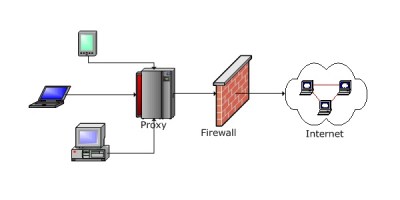Configuring MikroTik Router For Effective Proxy Filtering
Internet security is a crucial issue that every organization should take very seriously. One effective way to improve security is through the use of a proxy server. A proxy server is a server that acts as an intermediary between a client and the internet. Its primary function is to filter traffic, enhance speed, and cache requests by acting as a buffer between clients and the internet. At its essence, a proxy server is a security tool, and its optimization is critical for securing a network and safeguarding user data.

One of the most popular types of proxy servers is the MikroTik Router Web Proxy. This article explores how to configure the MikroTik Router Web Proxy for optimized performance. The following are some of the critical points that users should consider when configuring the MikroTik Router Web Proxy for improved performance.
1. Enabling the Proxy Feature on MikroTik Router
The first step in configuring the MikroTik Router Web Proxy is to enable the proxy feature on the router. This enables the router to act as an intermediary between clients and the internet. To enable the feature, follow the steps below.
- Open the Winbox Router Configuration Software
- Navigate to "IP -> Web Proxy -> General"
- Click on the "Enabled" checkbox
Once the proxy feature has been enabled, the router can then be configured to optimize its performance for faster and more efficient data transfer.
2. Configuring the Cache Size
The cache is a critical component of the MikroTik Router Web Proxy. It is the area where the router stores data to be served to clients so that subsequent requests for the same data can be handled faster. By default, the cache size is set at 256MB, but this can be adjusted to suit the needs of an organization. To configure the cache size, follow the steps below.
- Open Winbox Router Configuration Software
- Navigate to "IP -> Web Proxy -> Settings"
- Under "Cache Settings," adjust the "Cache Size" to the desired size
Setting an appropriate cache size not only improves the performance of the proxy server but also helps to reduce the load on the network and bandwidth use.
3. Configuring the Cache on Disk
The cache on disk is another critical component of the MikroTik Router Web Proxy. It is the area where the router stores data to be served to clients. Configuring the cache on disk is important because it allows data to be stored on a hard disk rather than in memory, leading to more efficient data handling and better performance. To configure the cache on disk, follow the steps below.
- Open Winbox Router Configuration Software
- Navigate to "IP -> Web Proxy -> Settings"
- Under "Cache Settings," adjust the "Cache On Disk" to "Enabled"
Enabling the cache on disk will significantly reduce the load on memory, leading to improved performance and faster data handling.
4. Configuring the Proxy Access
The proxy access is another critical feature of the MikroTik Router Web Proxy. Configuring the proxy access is important because it sets the limits for how the proxy will interact with clients. There are several ways to configure proxy access, including by IP address, network range, and protocol. To configure proxy access, follow the steps below.
- Open Winbox Router Configuration Software
- Navigate to "IP -> Web Proxy -> Access"
- Select the appropriate access method, e.g., "By IP Address"
- Add rules to allow or deny access to the proxy
Properly configuring the proxy access feature is critical for securing networks and preventing unauthorized access to the proxy server.
5. Configuring DNS
Configuring DNS is another critical component of the MikroTik Router Web Proxy. DNS settings are important because they determine how the router resolves domain names, which in turn affects how the proxy handles requests. To configure DNS, follow the steps below.
- Open Winbox Router Configuration Software
- Navigate to "IP -> DNS"
- Add DNS servers
Properly configuring DNS settings is critical for the MikroTik Router Web Proxy to work efficiently and avoid issues such as request timeouts, slow data transfer, and failure to resolve domain names.
Conclusion
The MikroTik Router Web Proxy is a powerful tool for securing networks and safeguarding user data. With the right configuration, it can be optimized for improved performance and faster data handling. This article offers some critical points about how to configure the MikroTik Router Web Proxy for optimized performance. Whether you are configuring a proxy server for an organization or personal use, it is essential to pay attention to these points and ensure that your server is configured to deliver fast, secure, and efficient data transfer.



Post a Comment for "Configuring MikroTik Router For Effective Proxy Filtering"